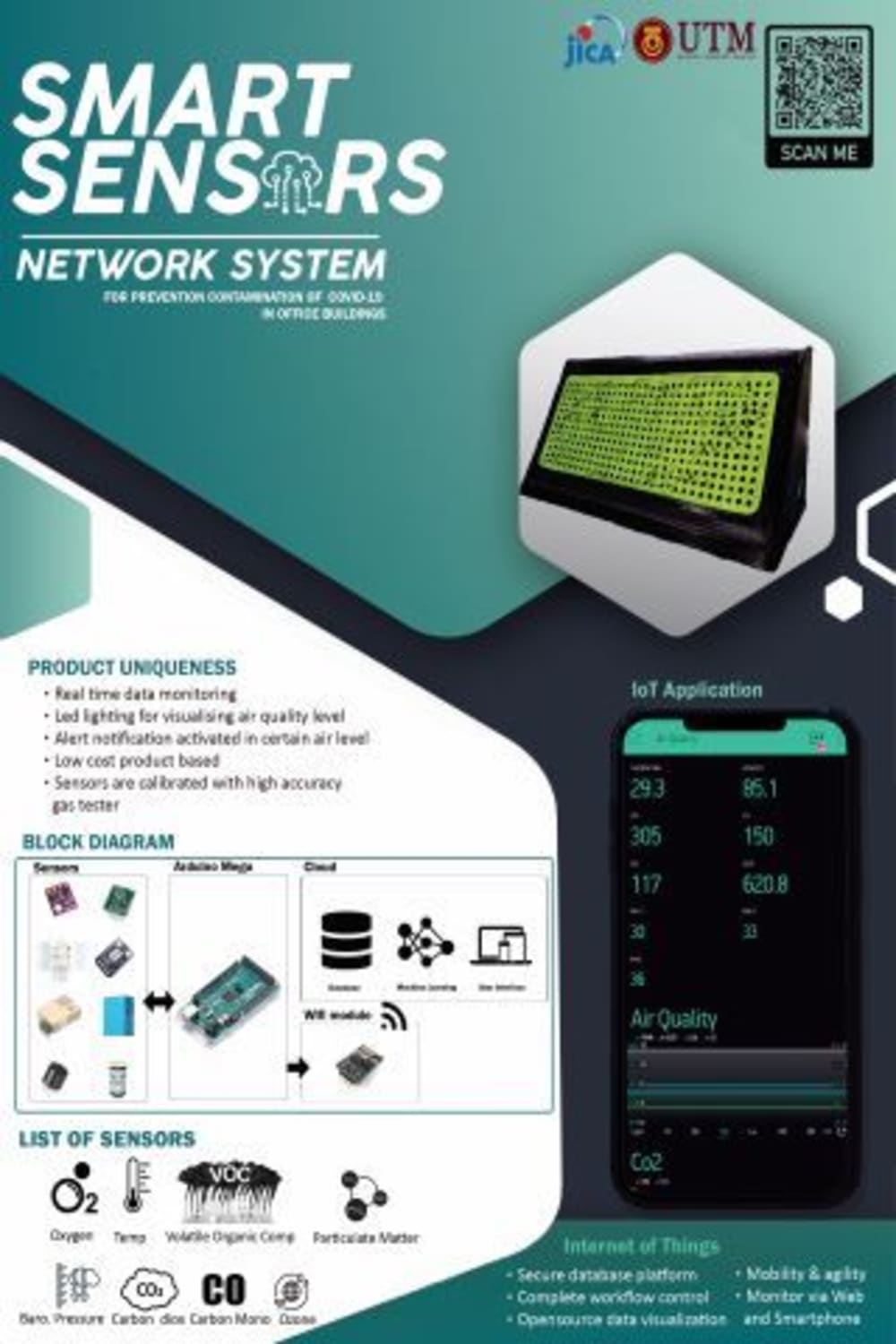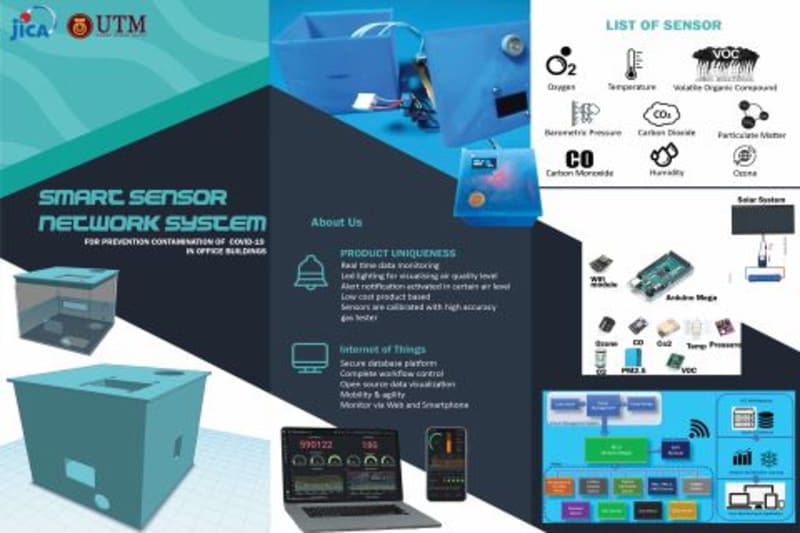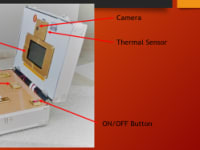The idea of a Smart Sensor Network is to be a part of the Covid-19 mitigation in the society especially in the office building. The US EPA mentioned that indoor air is 100 times more contaminated than outside air, and the CDC said that there is high potential of Covid 19 airborne transmission around us. Thus, having a smart sensor as preventive measure is necessary in our community as the device will monitor the behaviors of indoor air quality that is contaminated. With that, the Smart Sensor Network is indirectly promoting the well-being and ensuring healthy a lifestyle for all population around the world, especially those who spend their lives in office buildings. Therefore, the implementation of the Smart Sensor Network is necessary during the pandemic and even afterwards the system will be still relevant to be use. This product will help industry and community with the experience of the adaptation of IoT aligned with IR4.0.
Smart Sensor Network system mainly focuses on indoor air quality monitoring. The cost-effective device is operated by using the Arduino Mega microcontroller and IoT platform to escalate air quality in the closed environment especially office buildings. The device will monitor the indoor environment and provide early detection via smartphone and website for the user in the building. In order for the device to be connected to IoT getaway, a Wi-Fi module named ESP8266 is used as the middleware. The device will monitor the indoor environment and provide early detection via smartphone and website for the user in the building.
Based on the real time indoor air quality collected by the device, it can analyze the polluted air that has high potential to be linked with the airborne transmission. The device has multiple integrations of sensors such as temperature, humidity, carbon dioxide (CO2), carbon monoxide (CO), particulate matter 2.5 (PM), volatile organic compound (VOC) and oxygen. All of the sensors integrated on the system are from low costs components. However, these sensors are calibrated with a high accuracy gas tester in order to ensure the accuracy and reliability of the smart network sensors.
All the sensors collected by the controller will be sent to the IoT platform. Smartphone apps and website are the two main platform for the indoor air quality monitoring. The communication of the IoT platform with the smart sensor is protected by password authentication protocol for data protection and control access. Furthermore, the IoT platform can store the database of the indoor air quality for up to three months. Another interesting feature of the smart sensor network is, the IoT platform has the ability of alert system which will notify the users if the air quality is polluted with potential airborne transmission. Overall, the smart network system is a device with multiple sensors integrations which will monitor and provide early detection of the polluted indoor via an IoT platform.
Video
Like this entry?
-
About the Entrant
- Name:Fitri Yakub
- Type of entry:teamTeam members:Muhammad Sharifuddin Abd Rahim
Ahmad Redzuan Mohd Hanapiah
Sheikh Ahmad Zaki Shaikh Salim - Software used for this entry:AutoCAD, Proteus, Eagle, Blynk
- Patent status:pending








